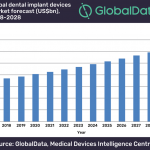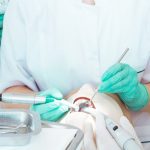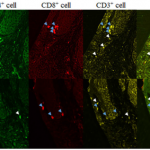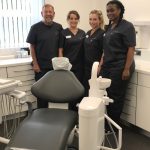When I was a student at Birmingham dental school in the 70s we probably had access to the best dental public health academic education team in the country. The irony is that as a typical dental student of that time I was more interested in the technical and practical hands on work which I thought was what dentistry was all about.
I was oblivious to the significance of dental public health and that the most important tool in improving oral health was not the latest developments in materials and equipment (though as dental caries was far more prevalent then, and oral health much poorer, these were certainly important) but was epidemiology and data. It was many years before I was fully able to understand that accurate data and its interpretation should drive the development of all healthcare.
At the moment there appears to be a widespread difficulty in recruiting dental clinicians but if you look at the data then this should not be a surprise. In 2002 when the last comprehensive dental workforce review was published approximately 30 million people were seeing a dentist on a relatively regular basis whereas now it is approximately 36 million, in either the private or public sector, without growth and change in the workforce this is bound to put pressure on the system. The most recent review of the dental workforce published in 2013 recommended a 10% reduction in the number of dental students and an increase in the training of other members of the dental team. This remains the correct way forward as it reflects the changing needs of the population as a result of the improvement in overall oral health and the changing demographic.
Findings from the original Steele pilots and contract reform prototypes also suggest that there needs to be greater use of the whole dental team. There are indications that the use of a less rigid approach to currency application, either through contract reform or simply more use of the existing flexibilities might just be about to move forward, but without a larger dental care professional (DCP) workforce it is unlikely to be deliverable on a large scale.
Although the reduction in dental student numbers went ahead the number of (DCP) commissions has not, as yet, increased. Health Education England (HEE) has confirmed that the funding mechanism for DCP education has, like nursing and midwifery, changed since 2017 with student loans replacing NHS bursaries.
HEE have now commissioned yet another review of the dental workforce, Advancing Dental Care, which has now entered a second phase of “further research, stakeholder engagement, option analyses and piloting potential solutions” which they indicate, will take three years. At a time when there is already severe pressure on the dental workforce and initial findings from the evaluation of contract reform pilots indicated that a more diverse workforce was critical to their success, this seems a little like Nero fiddling while Rome burnt.
Fortunately other countries produce dental graduates in such numbers that their own economies cannot afford to support and many remain keen to move to the UK. This has always been the case, when I graduated in the mid seventies graduates of commonwealth countries had the right to registration in the UK and, as in other areas of healthcare, supported the delivery of NHS services. At the moment a significant number of EU countries overproduce dentists so unless the Brexit process goes really badly this is probably how the NHS will have to meet its statutory duty (included in the 2006 legislation) to provide or commission dental services. The main problem now seems to be that the processes in place to enable suitable clinicians to gain the all important NHS performer number are complex and much too time consuming. HEE seems to have recognized this and have indicated that they will work to improve the situation but it is taking an inordinate amount of time.
Change in the balance of dental education and the workforce in this country is absolutely the right thing to do but it is taking far too long.
















